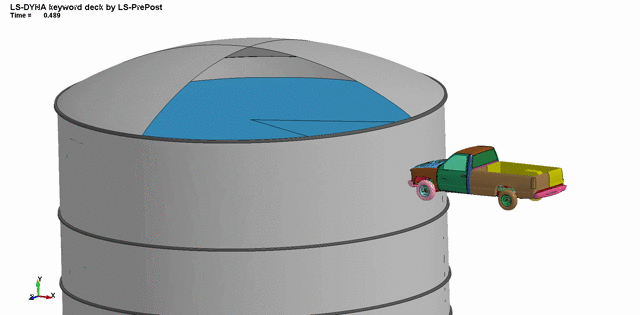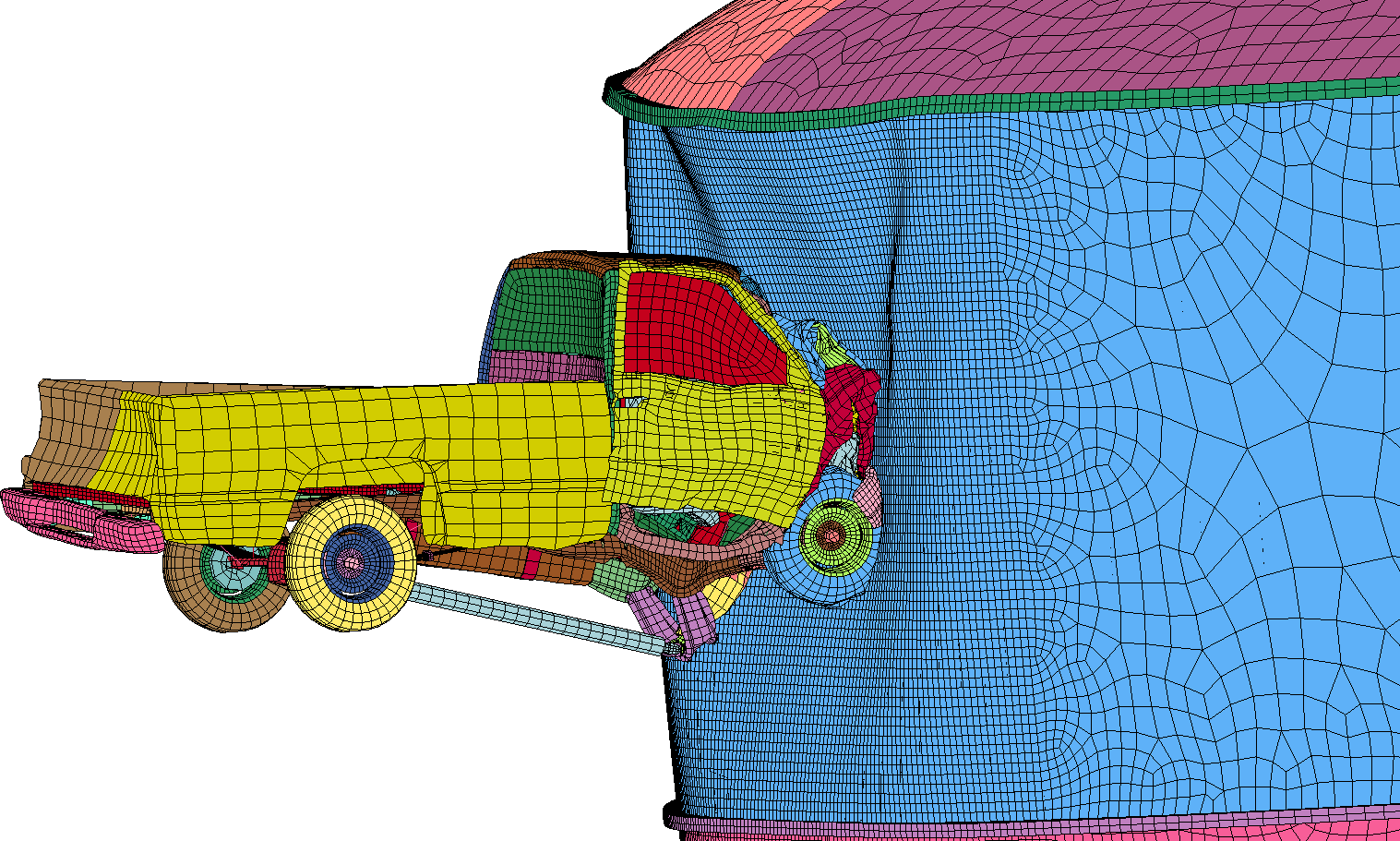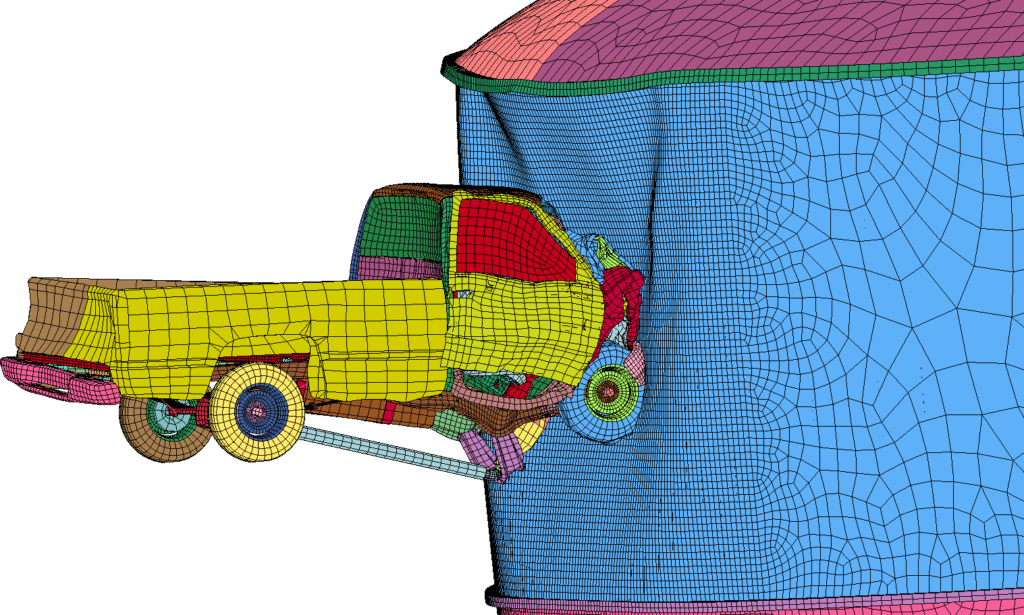The Design Basis and Beyond
The amount of brainpower used to design a nuclear plant rivals that of NASA during the height of the space race. Original plant designers seemed to take everything into account, even unthinkable events. Plants can withstand a spontaneous break of the pipe connected to the reactor! The idea was that these events were the bounding, worst conceivable things that could happen. We call these events Design Basis Events (DBEs).
After the Fukushima accident, regulators in the US found that plants should really design for the most unthinkable natural disasters. These events Beyond Design Basis (BDB) because they’re outside anything that people thought would be possible.
One of these BDB events is the tornado. All sites in the US had to design for wind, but the NRC wanted sites designed for unthinkable wind speeds.
Beyond the Design Basis: Tornado Missile Impact on Storage TanksSite Challenges
One site found that a water storage tank may not be protected for the increased wind speeds and wind driven missiles. Evaluations were done for much lower speeds, and wind driven missiles were never considered for the tank in the Design Basis.
The site was faced with 2 options:
Build a barrier system around the tank
Evaluate the tank for impact
Building the barrier system around the tank would be an arduous task. One that would likely have costs more than $1M, and cause considerable disturbance to the site.
Tank Impact Evaluation
We were contacted by the site to perform a tank impact evaluation and determine whether the tank would survive an impact from a tornado missile. Looking at the tank, it appeared that the water would absorb much of the energy, limiting the damage to the tank.
We reverse engineered the tank, and developed a Finite Element Model. A battery of missile impacts was evaluated, including the impact of a ¾ ton Chevy Pickup Truck. The pickup truck was modeled to closely resemble the automobile described in Regulatory Guide 1.76 Rev. 1.
The analysis shows that the water absorbs nearly 30% of the energy from the truck. This keeps the tank from tearing. As shown below, even at the top of the tank, the water absorbs energy in the form of a large wave.



